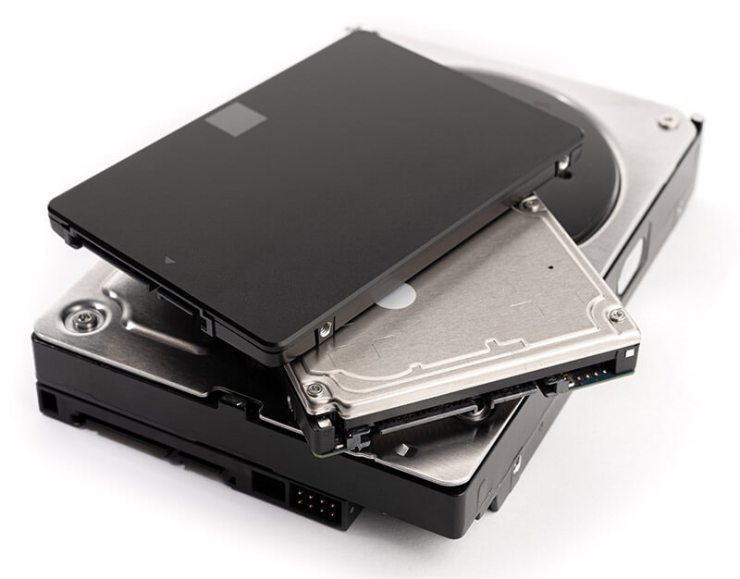Today’s hard drive market offers numerous options, so it can be confusing to ensure you’re making the best decision to meet your needs. There are several factors to consider, including performance and price. However, your first action should be to decide between a traditional hard disk drive (HDD) or a solid-state drive (SSD).
To help, I break down the pros and cons below:
Operation
Think of SSDs as flash drives, using electrical circuitry to operate. They have no moving parts. In contrast, HDDs have several moving parts, including platters, arms that read and write on each platter, and a motor to spin and move these parts.
If you value portability, SSDs are typically smaller. For laptop battery users, SSDs consume less energy than HDDs and allow your computer to run cooler.
Performance
When it comes to speed, SSDs are faster. HDDs have more latency due to the mechanical moving parts, and this is noticeable upon startup and most operations. A typical SSD will read/write many times faster than a 7200RPM HDD (and many times faster than traditional USB flash drives).
If you work with large files or do frequent backups, the speed savings of SSD is definitely worth it. SSDs also do not need to defragment because they were designed to have information written sporadically for quick, simultaneous reading.
Dependability
SSDs are more durable and dependable. The lack of moving parts make SSDs better suited to temperature extremes, accidental drops and vibrations. Most data shows that HDDs fail sooner on average than SSDs. While SSD cells can wear out over time, it is often after mechanical parts on a HDD fail.
One caveat is that HDDs may be more durable for long-term data storage after being disconnected for years. But for most applications, you should have no concern with reliability of the newer SSD technology. Regardless, always perform frequent backups for peace of mind.
Price
Here is the one area that HDDs win convincingly. SSDs have a more expensive price per gigabyte because they have a more complex manufacturing process. HDDs are also typically available in higher data capacities.
So if you need a lot of storage, you’ll find more options with HDDs at a much lower price. While the price of SSDs has been dropping, it’s typically over 2x the cost of a HDD for the same capacity. When you get into large capacities, the price gap gets even wider.

What I do
I use a mix of HDD and SSD. I prefer my main hard drive to be SSD, as I gain efficiencies in startup, running applications and processing data. Likewise, when I shoot 4K video, I use SSD cards for faster access.
My main storage is a Pegasus RAID using HDD. It’s a 12TB 6-bay unit, and I have two of them for redundancy. Due to the capacity needed and price point, HDD was much more practical. And, with RAID 5 configuration (where I’d have to lose multiple drives to lose content) and another RAID for backup, I have double data protection. After all, this data is my livelihood, my resume and my memories.
Making a decision
There is no perfect answer for what is right for you. Just think about the pros and cons and see what fits your particular needs. Only you know what qualities your drive needs to provide you. New drives come out all the time, so what someone you know in the industry did 2 years ago may not be the best thing to do now.
Once you make your decision on getting an SSD, then you must decide upon what type of drive to get. Yes, there are several different types of interfaces available for SSD today, including the fast NVMe SSD. There are even hybrid SSHDs. You didn’t think it would be that easy, did you? But don’t worry, my next article will discuss the different types of SSDs.
Tell your story with the second annual Visual Storytelling Conference!
Experience four days of interactive, online training sessions featuring a range of educational content with experienced photographers and content creators. This free event kicks off with a series of technical boot camps to build essential skills, followed by live, online sessions on photography, video, business and social media. Join live from March 10-13, 2022!
